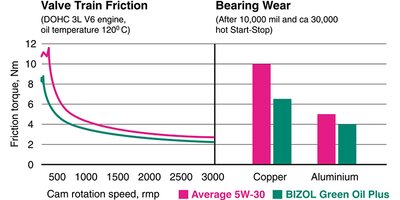MANUAL TRANSMISSION NOISE: TYPES, CAUSES, AND SOLUTIONS
Stick shifts, beloved for their connection to driving, sometimes produce unexpected clamor. These sounds can range from subtle to concerning, signaling possible problems.In this guide, we’ll explore the types of manual transmission bearing noise, their causes, and practical solutions for a quieter and enhanced driving pleasure.
Why manual transmission can make noise
Within the intricate realm of stick shifts, a symphony of mechanical parts choreographs the dance of power between your motor and wheels. Yet, amidst this mechanical ballet, the discordant notes of noise often emerge as an unintended performance. At the core of this sonic spectacle lies the interplay of gears, shafts, and bearings. These metallic actors, in their high-stakes engagements during gear shifts, create harmonies of friction and dissonances of meshing that echo through the gear shift’s chambers. Moreover, a supporting cast of lubricating fluids plays a vital but temperamental role. Should these fluids falter in their lubricating duties, introducing contamination or dwindling levels, they too become instrumental in the gear shift’s noisy repertoire. In essence, the manual transmission noise in gear can be a noticeable aspect of this multifaceted symposium of mechanical poetry and fluid dynamics, where understanding the intricacies is the key to orchestrating a quieter performance.
Types of manual transmission noises and their causes
1. Manual transmission whining noise
In the world of stick shifts, a common sound is the high-pitched whine, often caused by worn bearings supporting the rotating shafts inside. Insufficient grease application from low-quality or contaminated gear shift fluid can intensify this clamor.
2. Manual transmission grinding noise
This sound usually results from gears failing to synchronize properly, causing teeth to grind and potentially lead to damage. Driver error, like shifting without properly engaging the clutch, or wear and tear on the synchronizer rings responsible for matching gear speeds, can contribute to this issue.
3. Manual transmission clunking noise
A sudden and loud clunk or bang when engaging the clutch or shifting gears, it may be attributed to issues with the gearbox’s mounts or the driveline parts. Worn-out gear shift mounts can allow excessive movement, leading to abrupt clamor. Similarly, loose U-joints and driveshaft parts can produce this unsettling clamor.
4. Manual transmission making rattling noise
This auditory cue frequently serves as a sign of components in a state of disarray or disrepair within the gear shift mechanism or the clutch assembly. Loose bolts or fasteners lead to rattling, as can issues with the clutch release bearing or a damaged friction plate. Additionally, objects or debris trapped between the gear shift’s housing and its internal components can create a rattling clamor.
5. Hissing or Whirring Noise
Sometimes, a hissing or whirring clamor may emanate from the stick shift, particularly when idling or in neutral. This acoustic manifestation points to an issue concerning the bearing on the input shaft or the pilot bearing. When these bearings wear out, they can produce a continuous whirring noise that varies with engine speed.

Is it safe to drive with noise in manual transmission
Experiencing unusual gearbox sounds can be unsettling, but whether it's safe to continue driving depends on the noise's type and severity.
Manual transmission whining noise when decelerating, while not an immediate safety concern, should be addressed promptly to prevent potential issues. Harsh grinding or clunking noises demand immediate attention to avoid costly damage and ensure safety. In summary, timely action and regular maintenance are essential to avoid significant transmission problems.
Noisy Manual Transmission: How to Fix It
Dealing with a noisy stick shift can be both frustrating and concerning, but there are several potential solutions on how to quiet a noisy manual transmission and restore tranquility to your driving experience.
1. Transmission fluid change:
Regularly changing the gear shift fluid as recommended by your vehicle’s manufacturer can help reduce friction and clamor. Consider using high-quality transmission fluids like those offered by Bizol for enhanced performance and protection.
2. Inspect and replace worn components:
A thorough inspection by a qualified mechanic identifies problematic components such as worn-out bearings, damaged synchronizers, or a faulty clutch. Replace any worn parts to eliminate the source of the clamor.
3. Clutch adjustment:
If the noise is associated with clutch engagement, adjusting the clutch pedal and linkage sometimes resolve the issue. Properly adjusted clutches ensure smooth engagement and reduce the potential for noise during shifting.
4. Gearbox mounts replacement:
Worn gear shift mounts allow excessive movement, leading to clunks and rattles. Replacing these mounts with new ones will help stabilize the gear shift and reduce clamor.
5. Check for loose bolts and fasteners:
Ensure all components are securely fastened and consider using thread-locking compounds to prevent future loosening.
6. Synchronizer repair or replacement:
If you’re experiencing grinding during gear shifts, damaged synchronizer rings may be the culprits. These rings match gear speeds for smooth shifts, and replacing them can restore quiet operation.
7. Professional inspection:
For complex or persistent noise issues, it’s advisable to consult a professional mechanic who specializes in gearboxes. They can diagnose and address the problem effectively, ensuring your transmission functions quietly and reliably.
A harsh grinding noise when shifting manual transmission can be particularly unsettling. But following these steps and considering Bizol products where appropriate, you can effectively address noisy stick shift issues and enjoy a quieter, smoother ride. Keep in mind that consistent upkeep and timely servicing play a pivotal role in extending the longevity of your transmission and guaranteeing a secure and pleasurable time behind the wheel.

You might also like

Prof. Dr. Boris Zhmud, Head of R&D, BIZOL Germany

Within the realm of automotive care, few substances are as vital as motor oil, in ensuring the seamless operation of a vehicle's propelling device. It serves as the lifeblood of a motor, ensuring that the intricate machinery operates efficiently and without unnecessary friction. The functions of motor lubricant substance extend far beyond just lubrication, encompassing a range of critical tasks that contribute to the longevity and performance of a propelling mechanism. In this article, we’ll delve into the multifaceted functions of motor oil and explore how it plays a pivotal role in maintaining the health of automotive powerhouses.

The modern marvel of an internal combustion motor powers our vehicles, providing the strength and reliability we rely on for daily transportation. However, just like anything else subjected to constant use, motorized units experience wear and tear over time. Component deterioration can significantly impact performance and longevity. In this article, we will delve into the intricacies of engine wear meaning, explore the various causes behind it, provide actionable tips to reduce and prevent it. Furthermore, we will look at how specialized engine oils, such as BIZOL, play a crucial role in safeguarding your engine’s health. Let’s begin by understanding what engine wear is and the factors that contribute to it.

